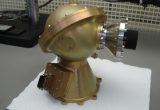The Euclid/VIS instrument Calibration Unit has been delivered for satellite integration
The environmental and performance test campaign of the flight model of the Euclid mission Payload Module (PLM), performed at Airbus Defence and Space (Toulouse, France), ended successfully in September 2021.
The results of the test campaign show that both instruments are working to specifications. These instruments are VIS (VISible instrument), the imager working in visible light, and NISP (Near Infrared Spectrometer and Photometer), a spectro-imager and photometer working in the near infrared.
During this campaign, the Calibration Unit of the VIS instrument, a subsystem under IAS responsibility, was tested for the first time in flight configuration. The CU is correctly aligned to the focal plane and its performances are fully compliant to specifications. The CU will perform flatfields of the VIS FPA (focal plane assembly) to monitor and correct the calibration of the instrument if necessary during the whole mission duration.
Since the end of the campaign, the PLM has been delivered to Thales Alenia Space (Turin, Italy) to be integrated on the Euclid service module (SVM). The integration phase and the satellite test campaign will take place during most of 2022, before the satellite is shipped the Guyana Space Center in Kourou. The launch of the Euclid mission by a Soyouz rocket is currently scheduled in March 2023.
The main scientific objective of the Euclid mission is mapping dark matter and dark energy in the universe, to understand the acceleration of the Universe expansion. To reach this objective, VIS will image more than a third of the sky with an extreme optical quality, in order to measure the shape of more than a billion galaxies, while NISP will measure the spectral shifts of tens of millions among them by infrared spectroscopy.
The mission will take advantage of gravitational lensing, the deformation of far away galaxies, which is caused by the matter present between them and the Euclid instruments. It allows measuring the spatial distribution and aggregation of the galaxies, to obtain a 3D image of the evolution of the dark matter distribution. With these data, the scientists will be able to reconstruct the history of the expansion of the universe for the latest billions years, which will allow them to estimate within a percent the acceleration caused by the mysterious dark energy and within 10% the potential variation of the acceleration.
Contact at IAS: Anne Philippon, Nabila Aghanim
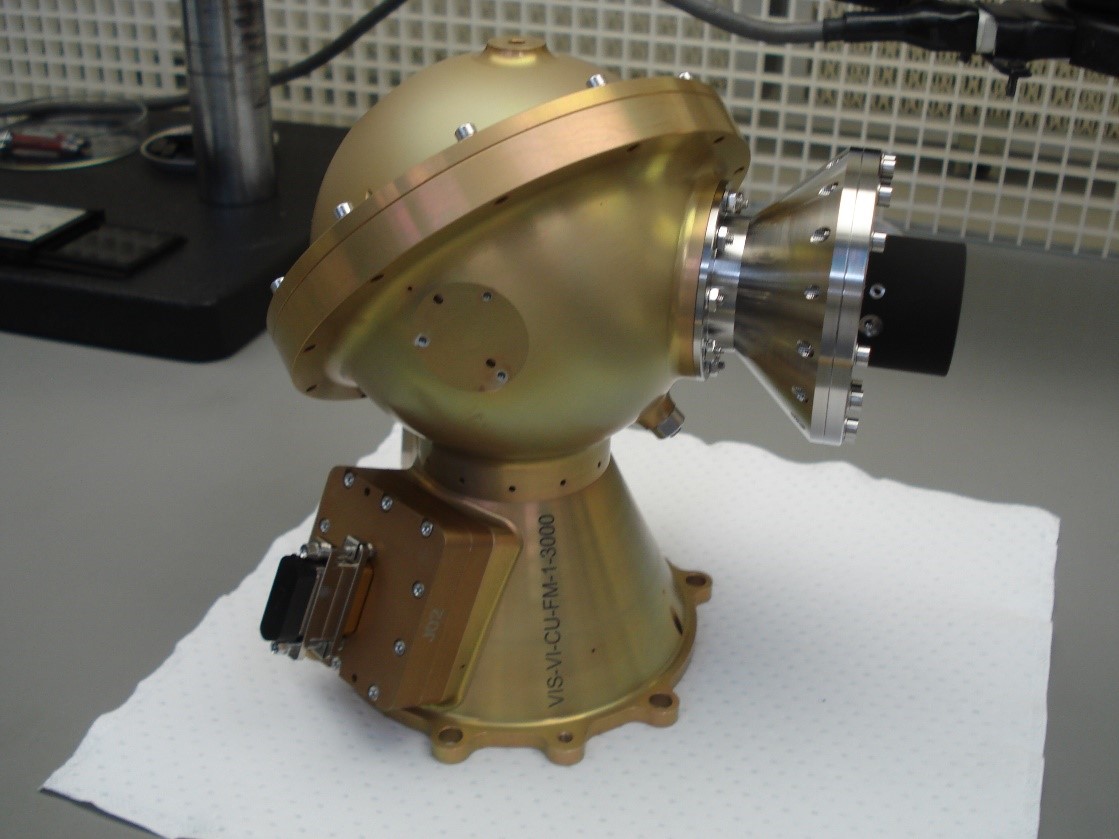
CU flight model before delivery.
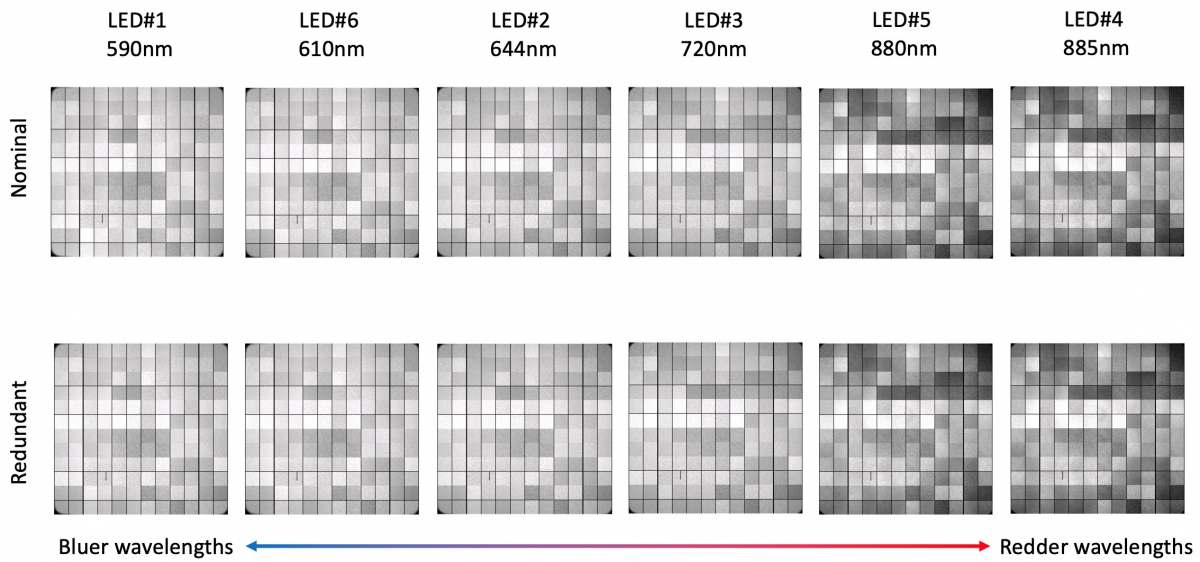
CU flight model flatfields for all LED on the main and redundant channels. Images are not corrected for bias.
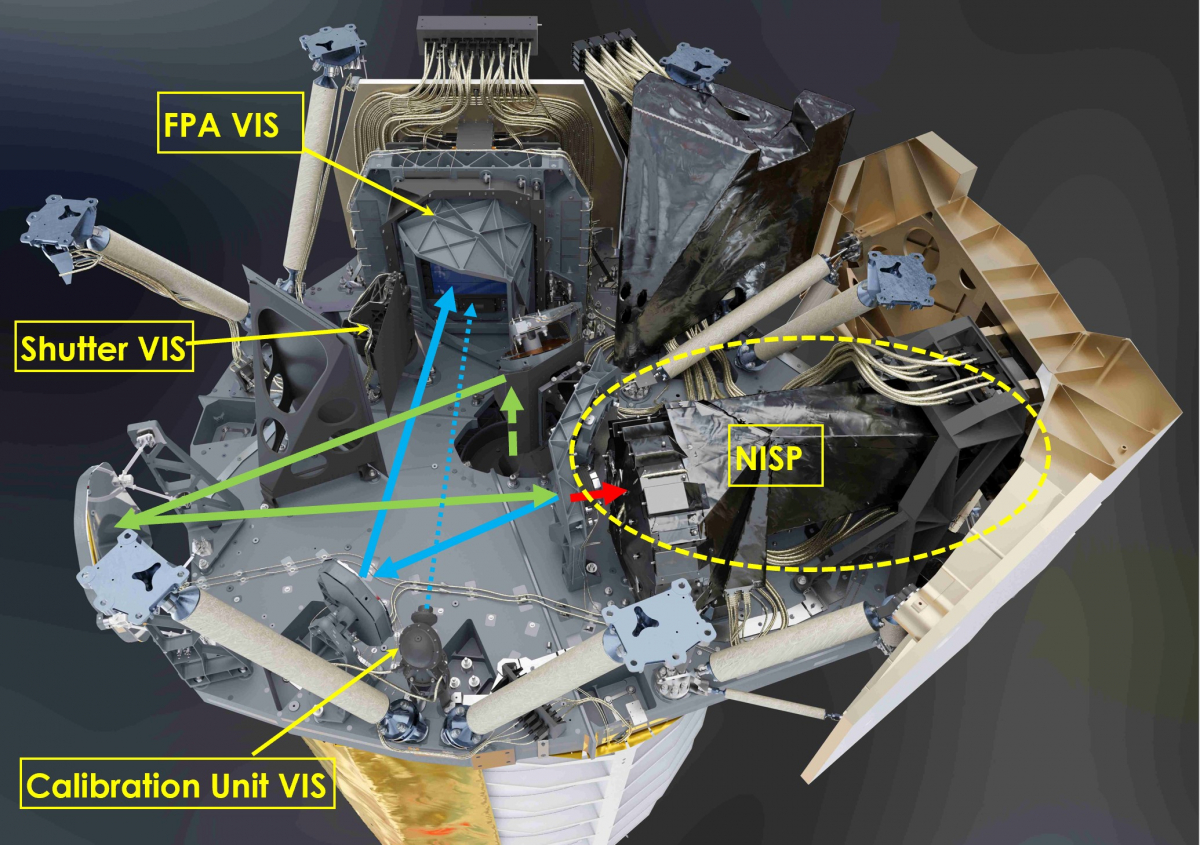
Euclid Payload Module (PLM).
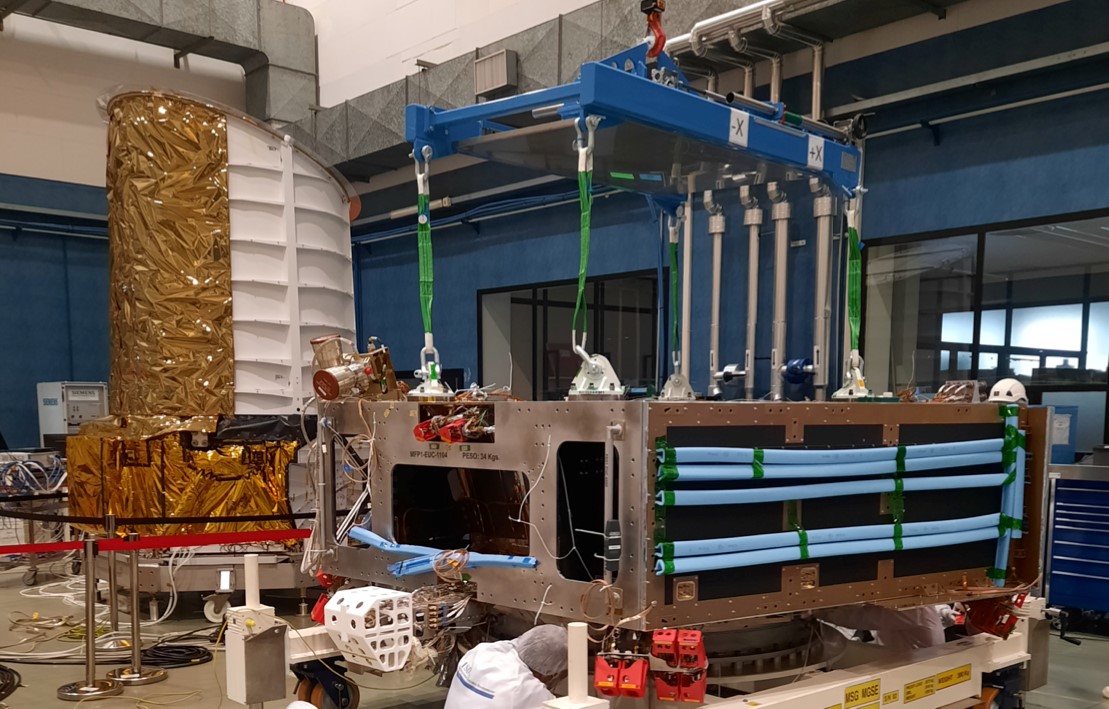
Euclid flight model (PLM and SVM) at Thales Alenia Space in Turin, Italy



